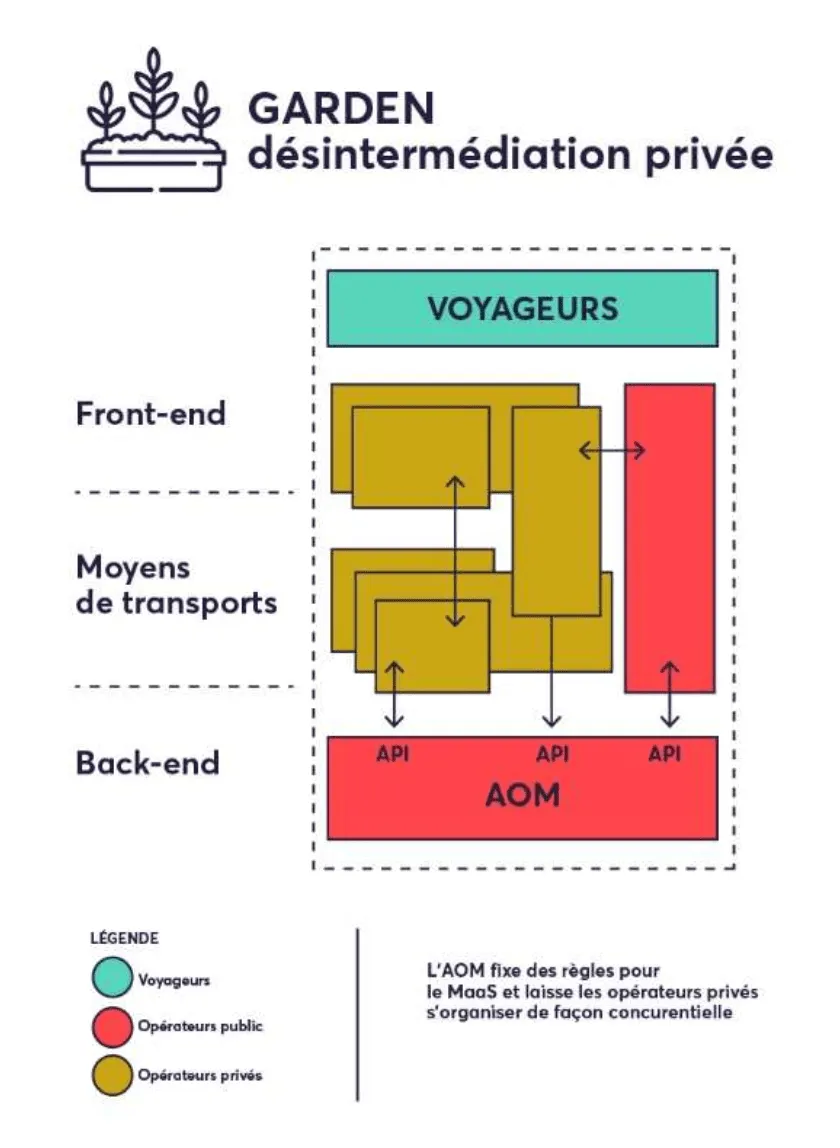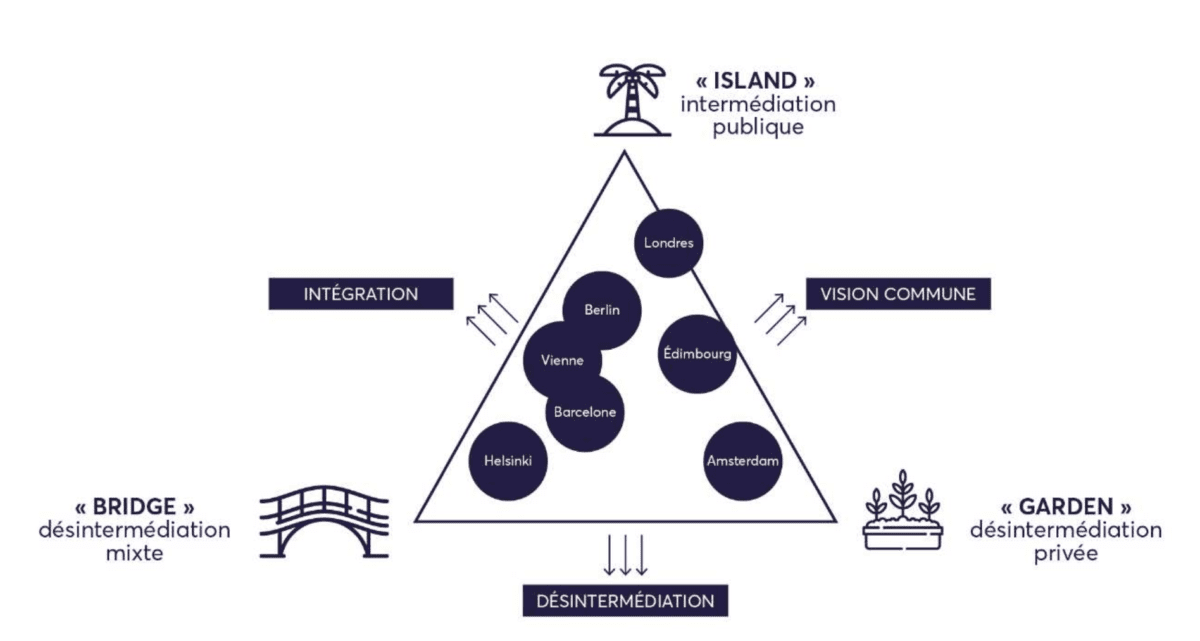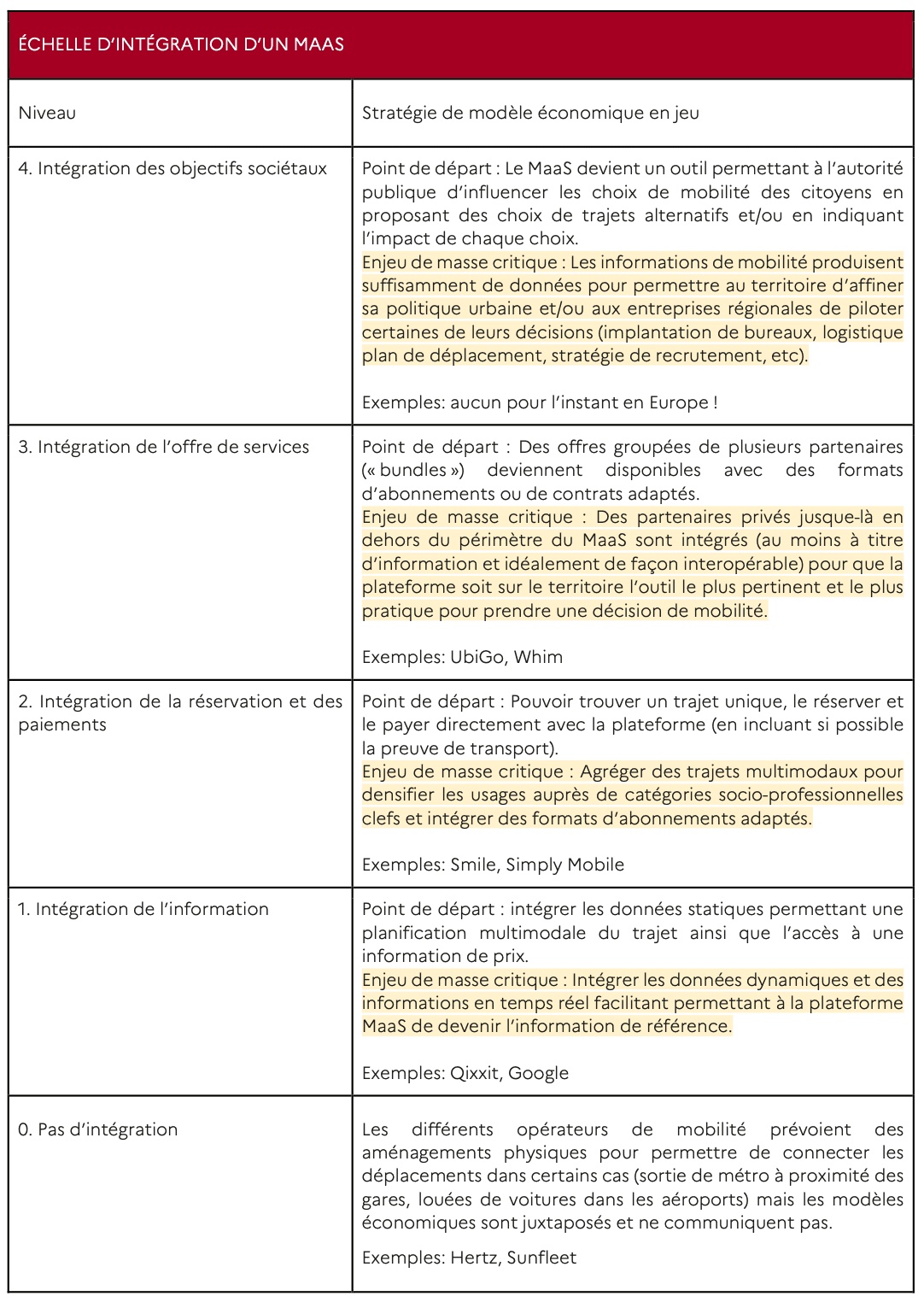Mobility as a Service (MaaS) Report 📄

Our Mobility-as-a-Service Report (MaaS) commissioned by the French National Agency for Ecological Transition (ADEME) and the General for Infrastructure, Transport, and the Sea (DGITM) is now available. It was researched and produced with my friends Julien de Labaca and Stéphane Schultz. We took stock of the proliferation of mobility-as-a-service projects in detail, we discussed strategy, profitability, and economic model based on a benchmark of the best practices of different countries and drew a clear picture of recommendations to move quickly on this subject by emerging from the fashion effects and announcement effects often specific to territorial policies.
In the report, we developed a simple 3-scenarios model to summarize the incredible variety of mobility-as-a-service business models worldwide. These Garden-Island-Bridge scenarios never exist fully in the market, but they are the three directional trends that shape the mobility-as-a-service market, depending on how is the front-end, the back-end, and the transportation systems are managed:

These scenarios give an envelope of possible business models, where different cities find different barycenters, with different gradients of private-public involvements, more or less disintermediation, or common goals in the different local projects:


Well, there would be many things to explain in discuss in this report. But as everything is written in French I’ll give you at least a translation of the conclusion for my contribution on the struggles of defining a proper business model for mobility-as-a-service platforms in France (and Europe by extension):
In France, the problem of innovation is often posed in terms of competition: who understood what to do ahead of the curve and acted upon it? We assume that the first to arrive will have won and will be able to showcase his exemplary know-how. Perhaps, but the reality of innovation in the sense of changing markets is more pragmatic. But first entrants oftentimes get wiped out while paving the way for others. “Pioneers have arrows in the backs.”
As far as MaaS is concerned, we must therefore point out that France has a significant (if counter-intuitive) advantage over other European countries: it is not the first to enter this crowded market. Not that different cities in France did nothing about Maas, but the few platforms that have appeared on our territory have been designed until now solely as technological projects to modernize (at a lower cost?) public transport. If it doesn’t last too long, this lateness can be a strength. Why? Because we can benefit from the many post-mortems of others’ MaaS strategies tried in many other European regions. They are guides to inform our choices and accelerate our mobility policies.
The cautionary word would be not to try the perfect silver bullet. We have seen that there is no magic solution to MaaS because there is never the same context, the same urbanism, the same demography, the same legacy infrastructure. The cultural context, the ambitions, the ability to bring productive collaborations into play… All this changes the logic of MaaS from one region or city to another. But know-hows exist and many technical bricks have been successfully implemented. As such, the first step to capitalize on our lateness is to not invest in redundant projects anymore by acknowledging the achievements and solutions available around us.
Another issue arising from our surveys in Europe is the need to build a balanced vision between the national and a local scale. It is a complex subject of the organization of political decision-making in territories facing heterogeneous realities. A subject that is at best under-appreciated, when it’s not just entirely ignored. And not to forget practical challenges for scaling up data standardization, the evolution of many regulatory frameworks, or the development of inter-regional approaches.
The final critical point to consider seems to be a lack of awareness in terms of large-scale behavioral change management when we address MaaS. Digital technologies must help build these responses, but they are not enough. Especially in the case of France where the cultural resistance to change is way above any other European country.
The full report (in French) is available here.



